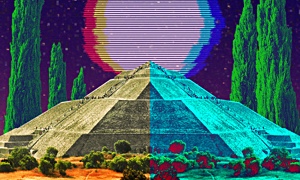
But his music is also playful and rugged enough to withstand any revisionism. You can rough it up, break it down, broaden or narrow it. In jazz nobody elses music sounds as equally right played by one monophonic instrument or filtered through a big band.
Jazz at Lincoln Center held a Thelonious Monk festival over the weekend, and its biggest event was a program of large-ensemble music at Rose Theater, with the 16-piece Jazz at Lincoln Center Orchestra and the pianist Marcus Roberts. In the past the organization and its house band have presented and played Monks music up and down. The orchestra, led by Wynton Marsalis, has particularly personalized the notion of big-band Monk. Its concerts in the past 15 years have included some of the large-ensemble Monk orchestrations written by Monk and Hall Overton in 1959 and 1963, but also new commissions from its own members, magnifying small-group Monk tunes.

The concert on Friday with irritating, recited biographical intrusions by the actor Courtney B. Vance drew on the orchestras own arrangements. They came in all stripes. The trombonist Vincent Gardners take on Light Blue used Gil Evans timbres piccolos, muted trumpets as well as a dramatically slow tempo, a solo-piano chorus and a finale that sounded like an orchestration of an improvised solo. (That trick orchestrating a notated improvisation was true to Monk: you can hear it on Little Rootie Tootie, from the recording of Monks 10-piece band at Town Hall in 1959. A preconcert audiovisual lecture by the historian Sam Stephenson, on the documentation of the rehearsals for that concert, demonstrated how Monk and Overton came to the idea.)
Other arrangements stressed rhythm first. Both Bye-Ya, arranged by the bassist Carlos Henriquez, and Criss Cross, arranged by the drummer Ali Jackson, used a 17th member: the percussionist Marc Quiones. Playing congas, Mr. Quiones built clave rhythms in conjunction with Mr. Jacksons timbales.
Mr. Marsalis loves playing with orchestral effects he has a cinematic imagination and his arrangement of Evidence showed it. Each of the themes strangely spaced notes came dressed in different colors, using the full range of the band, no single part of it for two consecutive notes. The approach suggested a living being, some big beast moving a toe, then an eyebrow, then a neck muscle, then a tail.
In two songs whose melodies come in sprays of notes, the arrangers played up that effect throughout. Skippy was arranged by Ted Nash, who played his own alto-saxophone solo, full of frenetic hummingbird motions; in Four in One, Mr. Marsalis got the melodys rippling spirit into his trumpet solo, making hungry, tearing phrases.























